May 15, 2013 | illustration
Tim O’Brien’s illustrations have been published in Rolling Stone, Newsweek, The New York Times and so many more – simple, conceptual images that resonate with audiences and stick a message in your brain. His personal pieces trade in celebrities and politicians for animals with bodies elegant and strong, and they persevere through hardships that make our stresses seem silly. There’s always a surreal aspect in his conceptual pieces but often they hide in subtleties, turning each illustration into a new game of “what in this picture is impossible?”
Tim is a professor at the University of Arts in Philadelphia and at the Pratt Institute in Brooklyn, and he’s lectured at The Norman Rockwell Museum, Rhode Island School of Design and the School of Visual Arts in New York City.

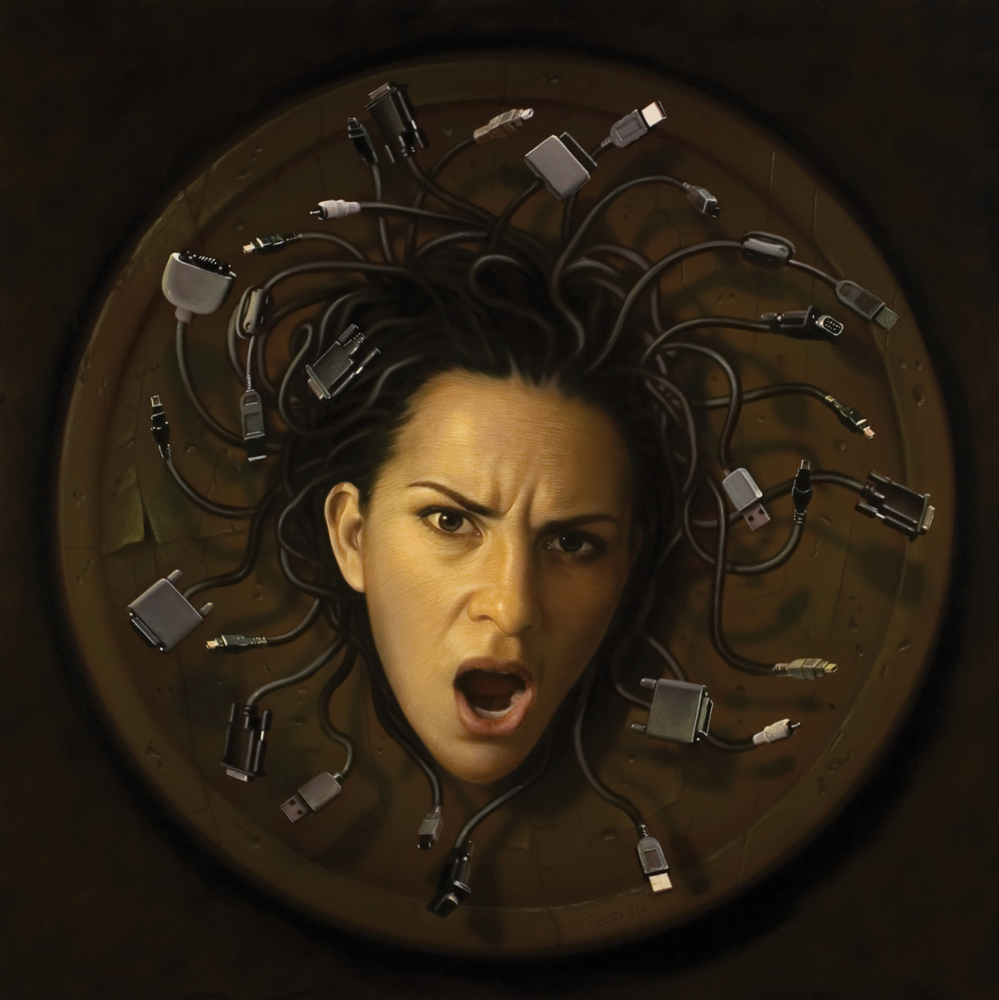

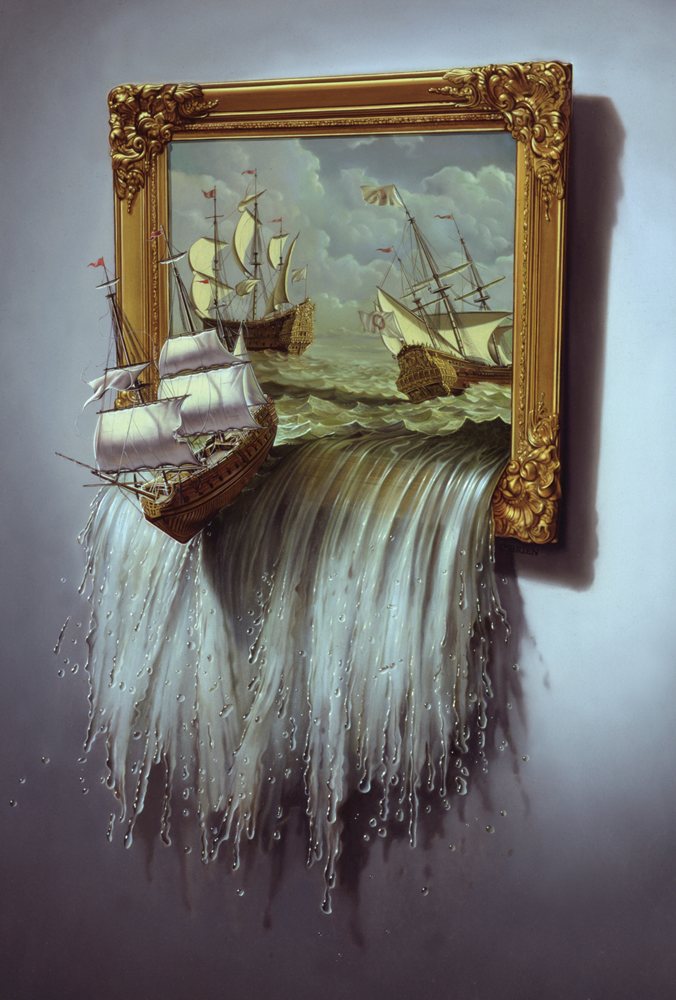
For more of Tim’s work see his website.
All images courtesy of the artist.
May 14, 2013 | design, illustration
She goes by Zivabelle, and her designs and illustrations are gorgeous. So simple and clean, but always with something more to them that makes you look just a bit longer. These minimalist fashion illustrations play with black and white, visible and invisible, light and shadow. She got her bachelors in Visual Communication at Bezalel Academy of Design in Jerusalem, then headed to Barcelona to get a masters in Fashion at ELISAVA – Universitat Pompeu Fabra.
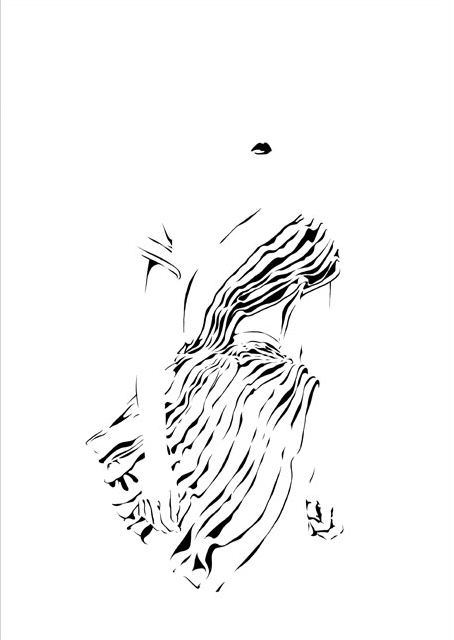
Is she there?
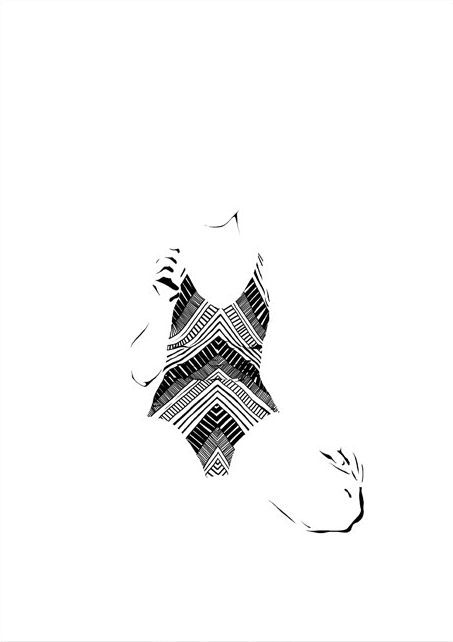
Wait, where’d she go?
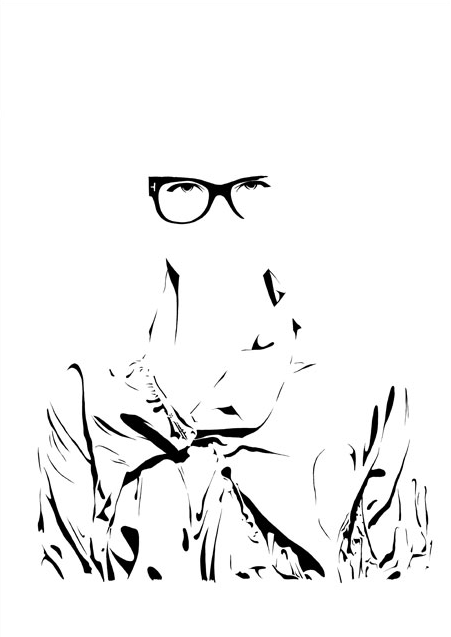
Images courtesy of the artist’s website. Check it out for more!
Mar 4, 2013 | illustration
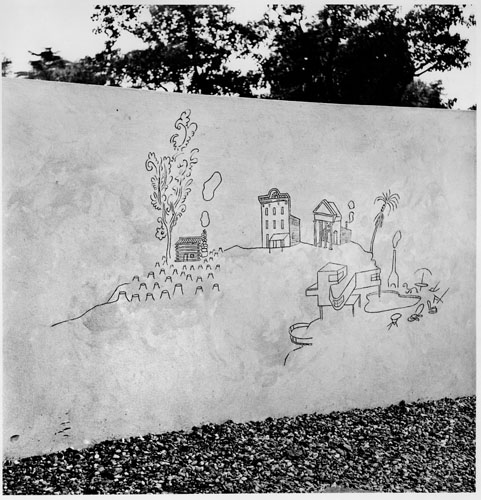
Children’s Labyrinth, 1954.
10th Milan Triennial, detail of History of Architecture section of mural.
Saul Steinberg‘s illustrations combine whimsy with art, creating mini-worlds that are clean and simple but at the same time lead the eye to someplace happy and bright.
Like a refined dose of Dr. Seuss, Steinberg prefers to draw realistically, turning typical scenes into magical places where the trees stretch up taller than the buildings – a small detail that makes our world seem more like a simply designed amusement park where thrill and wonder fill the air.
His work for the New Yorker explains all the scenes of the city, but I prefer the imaginary “Children’s Labyrinth,” drawn as part of the History of Architecture section of a mural. On the left sits a log cabin surrounded by the stumps of the trees those logs used to be. The most beautifully detailed tree stands next to the little building puffing smoke; the tree’s branches take delicate curlicue shapes as they expand just like the smoke beside them.
See more of Saul Steinberg’s work online at the Saul Steinberg Foundation Gallery.
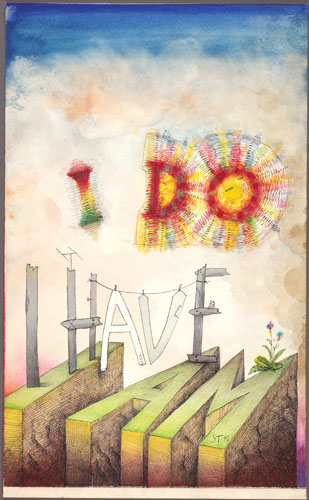
I Do, I Have, I Am, 1971.
Ink, marker pens, ballpoint pen, crayon, gouache, watercolor, and collage on paper, 22 3/4 x 14″.
Cover drawing for The New Yorker, July 31, 1971.
The Saul Steinberg Foundation.
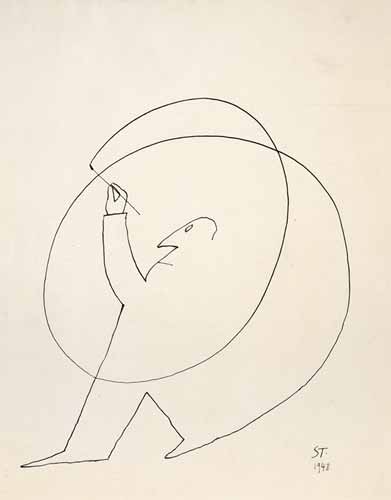
Untitled, 1948.
Ink on paper, 14 1/4 x 11 1/4″.
Beinecke Rare Book and Manuscript Library, Yale University.
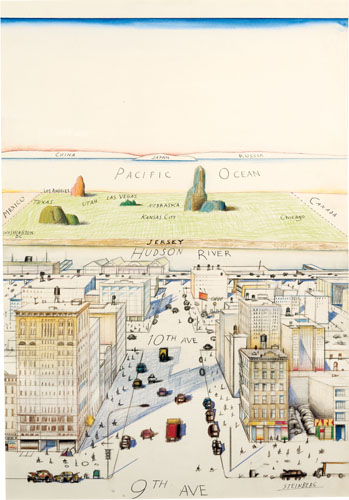
View of the World from 9th Avenue, 1976.
Ink, pencil, colored pencil, and watercolor on paper, 28 x 19″.
Cover drawing for The New Yorker, March 29, 1976.
Private collection.
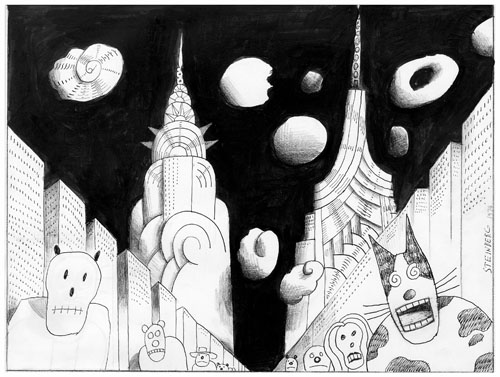
Untitled, 1974.
Ink, colored pencil, and collage on paper, 14 1/2 x 19 1/4″.
Originally published in The New Yorker, July 22, 1974.
The Saul Steinberg Foundation.
















